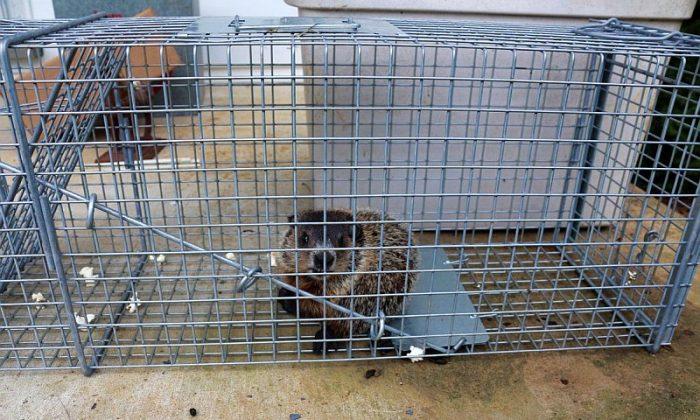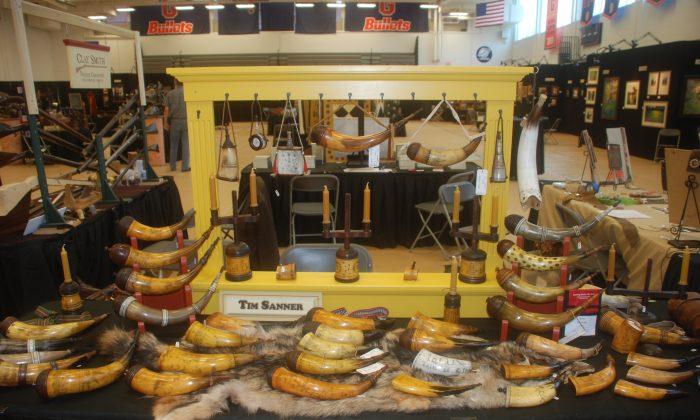“I know you don’t want to hear this, the only way to get rid of them is to shoot them.” Woodchucks moved in, reproduced and their families made burrows next to the foundations of the house, guest house and out buildings. They were everywhere. These weren’t moles or voles, rats or squirrels, not raccoons or opossums. These were huge groundhogs, or woodchucks, the farmer’s rural nemesis. In open fields they likewise excavated large burrows as big as ten feet in diameter with a central hole and auxiliary entrances. It made mowing difficult. The danger of domestic animals tripping in the holes and breaking legs was another peril.
There was no paucity of advice about what to do. It ran the gamut from putting bubble gum in their burrow holes to poison. It was said that woodchucks cannot digest bubble gum when they eat it thus it will kill them. Other advice was to run a hose from the exhaust of a car into the hole to suffocate them with carbon monoxide. One person even suggested making poisonous gas by mixing bleach and ammonia and pouring it into the hole.
A neighbor had a raccoon die under his shed. The stink of its putrefaction was abominable. It made his wife and kids gag every time they passed by to get to their door. We didn’t want anything dying under the house and, even if inclined to find a varmint shooter, the close proximity to our dwelling made it an impractical option.
“If you shoot it and it runs back into its hole, it is going to stink,” another neighbor warned. A whiff of my friend’s dead raccoon was enough to dissuade us from all but the possibility of removing the woodchucks intact. A neighbor offered his rusty, old leg hold traps he had behind his garage. He showed us how they worked. They would be set by standing on a spring mechanism then putting a clip over the trigger plate. The plate would be baited with a fresh slice of apple.
“Did you ever catch your woodchuck with it?” I asked my neighbor.
“No. My wife’s cat got its paw stuck in it. Had to spend $700 at the vet to have the leg set.” Leg hold traps were not an option. Domestic dogs and cats could be victims as well as wiley woodchucks. The same for poisons, they were out.
I went on line and found Tomahawk Live Traps. They have a toll-free telephone so I called to see if they had something that would work. I was put through to the company’s owner, Greg. He is an affable, very knowledgeable person that put me on the right track immediately. Tomahawk makes cage-like traps in all sizes from ones that will trap squirrels to those designed to catch feral cats, raccoons and a very large two-door model for woodchucks.
Greg suggested the large trap and a bait they make for herbivorous animals. It is a paste consisting of fruits and berries with a pleasant aroma to attract woodchucks. Greg suggested slicing a fresh apple and putting the slices around the trap’s release plate then smearing the fruit paste on the plate itself.
The big trap came in a week, shipped from Tomahawk’s factory in Hazelhurst, Wisconsin. It is all made in the U.S. and very sturdy. It has one inch square steel wire mesh all around. The trap is welded and well made.
Greg suggested two ways of using it. The first was simply to set the trap near the woodchuck’s hole. Bait it with fresh apple and use the fruit paste. The second option was to create an extension of a tunnel out of the woodchuck’s hole to the trap. Greg advised using an old blanket or tarp that would likewise cover the trap. He said it works best leaving the second cage door open so it faces the clear outside.
“The woodchuck will think the trap is just an extension of its tunnel,” Greg suggested. I tried it at the barn first where a mother had her brood of pups. I set the trap outside a hole I saw the woodchucks using when we came outside. They would scamper back into a hole they made under a corner of the barn.
It worked. On each of three successive nights I trapped a baby woodchuck. They are cute but when they grow up they surely can be destructive. Now for the big daddy that had eluded previous owners of our place. He is wise and wiley. He made a huge burrow under the guest house and excavated parts of the cement slab. He uncovered our propane line and was a veteran of many attempts on his life according to the father of the previous owner.
This big fella eluded my usual attempt with the Tomahawk trap. On the first try, outside his hole, he sprang the trap, likely by banging his big body against it. The big woodchuck deposited something like a poop inside the edge of the trap. He then dug under the sacking that I hammered from his hole to the open entrance of the trap, got out, and enjoyed his freedom nibbling sweet grass shoots all night until he returned to his hole in the morning.
I took the trap away and considered what Greg told me. The hole was directly under the foundation of the building. The copper propane line ran past it and was exposed by his digging. Large rocks and pieces of the foundation were pushed out of his burrow. I'd have to devise a way with the large, double door trap, to catch him either going in or coming out of his hole. I had to make the trap look natural.
I saw the big woodchuck outside its burrow nibbling grass as we drove in one evening. The car startled it and the big guy headed back into its hole under the guest house. Knowing that he was at home, I got the trap and blanket out of the garage and set it up as Greg instructed. We had a fresh apple in the refrigerator just for him.
I had to tape the blanket to the wall of the house since its burrow was directly under the slab. I made sure I did not impede the trap door from closing as I taped the blanket over the trap to make an extension of the woodchuck’s tunnel. From the large second door I reached into the trap and laid apple slices near the trap pedal and used the bait paste liberally.
` I checked my work to be sure neither door was impeded from closing once the woodchuck entered the trap. Once inside he would trigger the bait pedal. That would cause the trap doors to close. It was as good as I could make it. We went back to the house to await morning.
“If you have ever seen their claws and teeth you realize you have to handle them carefully if you trap them,” was my neighbor’s admonition. The Tomahawk trap has a galvanized protector plate at the top where the handle is. The plate serves to protect a trapper’s hand from anything inside that might be able to strike through its square mesh steel.
Next morning there he was. The big woodchuck was safely inside looking rather comfortable having eaten the fresh apple, seemingly resigned to his fate. I kept the trap in the shade until we displaced the big guy to a far off corner of our land. We took him far away from buildings and working fields where only woods and forest trees abounded.
I filled in his huge burrow under the foundation shoving large and small rocks he pushed out back as far as I could. I then shoveled dirt he'd piled outside his burrow in on top of them. I didn’t want any of his offspring taking advantage of the now vacant dwelling. Next I had to see if my new Tomahawk trap would work on the rest of the woodchuck clan that seemed to think they had a handy condominium at our house.
If you have animal pest problems and feel trapping them humanely is the best course, then contact Tomahawk Live Trap. You can find them on line at www.livetrap.com, or call them toll-free at 1-800-272-8727.
A raccoon in the attic can be caught by baiting a trap with a can of cat food. Once trapped the critter can be removed. Holes or broken screens it used to get inside can then be replaced with sturdy wire mesh to prevent re-entry and the raccoon released again.
The same procedure can be used for feral cats and pesky squirrels. Doing it yourself, or with the help of a friend or neighbor, using a Tomahawk Live Trap, can save a lot of money. The trap costs about $100 shipped to your house. It is far less costly than a professional pest removal service’s fee of $250 for one raccoon and $80 each for every pup caught. Professional trappers use the same trap but charge for their services.
“I’ve used my Tomahawk trap for several years. I’ve been able to help my neighbors get rid of raccoons. We trapped several wild cats and taken them to the humane society. There was a fox that one neighbor was afraid might injure their young infant playing in the yard. It was more perception than reality, the fox was afraid of people. I caught the fox and released it again deep into the woods,” a friend related when I described my success trapping woodchucks.
Using the Tomahawk Live Trap is easy and humane. You don’t have to be Daniel Boone to do it. The trap is shipped direct from the factory in Wisconsin to your house or farm. If you don’t want to do it yourself, I told my friend he ought to put a sign in his yard that reads: “Have trap, will travel.”





